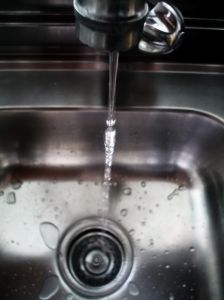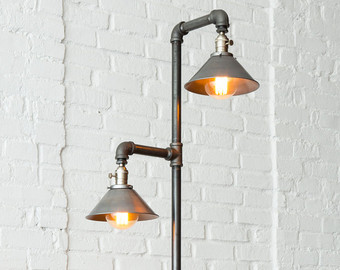Are your pipes kicking your butt? Without a doubt, pipe problems are frustrating. Whether it is dripping faucets, groaning noises, or leaks, it can get messy. You could call a plumber but people want to try anything before you call a plumber. If you are facing plumbing woes, you can try these home remedies to fix your problems.
Before you start these remedies, make sure your pipes are actually in trouble. While none of these remedies will make your piping problem worse, it’s better not to waste your resources. Some indicators that your pipes are in distress include:
Salt & White Vinegar
You might be wondering how salt and white vinegar can fix your pipes, but it’s pretty simple. Salt has a rough texture that can act as an abrasive to clean up buildup. Salt can also break down grease and emulsify fats. Meanwhile, vinegar’s acidic nature can break down organic compounds like soap scum and hair.
If you are using this remedy. you need to pour a tablespoon of salt and 1/4 cup of vinegar into your sink and let it sit for an hour, then running hot water will loosen particles from your drain.
Baking Soda & Vinegar
Another combination that can help clean out your pipes is baking soda and vinegar. When you combine a base (baking soda) with an acid (vinegar) creates a chemical reaction that produces bubbles. This reaction can remove loose materials and residue from inside the pipe without getting invasive.
Drain Snake
If the above remedies do not work, you might need to get the drain snake. This piece of hardware allows you to get deep into your pipes without using chemicals. The drain snake can help you break down compounds inside the pipes that could be causing the problem. After you are done with the Snake, run some hot water or one of the remedies above to finish the cleaning.
Water Helps Pipe Problems
People underestimate the power of water. Filling your sink with water and unplugging once a week will flush your pipes clean. For grease buildups, boil water and pour it down the drain.

Prevention is the best cure for pipe problems. Many plumbing problems can be prevented by monitoring what you put inside of your pipes. People typically have the most problems out of their bathrooms and kitchen sinks. Even if you have a garbage disposal, there are still substances that your garbage disposal can not grind up which can lead to blockages. Things that can cause blockages are coffee grounds, food particles, and grease. To protect your drain, we suggest using strainers and running cold water while you’re using your garbage disposal.
Newer PVC or copper pipes handle gunk from your drain better. Contact Detroit Nipple Works in Michigan to end your plumbing nightmares by providing you with a new set of pipes. Also, we offer pipes, fittings, and more!
 Do you have leftover industrial piping that you don’t know what to do with? You could “wow” guests at your house by making an industrial pipe floor lamp. An industrial floor lamp could range from $500- $1000 dollars. Why pay hundreds when you can build your own for half that price?
Do you have leftover industrial piping that you don’t know what to do with? You could “wow” guests at your house by making an industrial pipe floor lamp. An industrial floor lamp could range from $500- $1000 dollars. Why pay hundreds when you can build your own for half that price?
Here’s what you will need:
The Structure Pipes:
1- 36” Long ¾” Black Metal Pipe
2- 12” Long ¾” Black Metal Pipes
4- 8” Long ¾” Black Metal Pipes
3- 6” Long ¾” Black Metal Pipes
2- 5” Long ¾” Black Metal Pipes
1- 2” Long ¾” Black Metal Pipe
6- ¾” Black Metal Pipe Close Connectors
7- ¾” Black Metal Pipe Elbows – 90°
5- ¾” Galvanized Metal Pipe Tees
1- ¾” Galvanized Metal 4-Way Pipe Splitter
3- 1”-to-3/4” Black Metal Reducing Couplers
4- ¾” Galvanized Metal Pipe Floor Flanges
1- ¾” Black Metal Pipe Nut
The Lighting:
1- 15 foot Lamp Power Cord (16 Gauge)
4- Keyless Phenolic Light Sockets
10 Feet of Lamp Wire (16 Gauge)
1- Package Winged Wire Connectors (Min, 2x #18 Gauge – Max, 3x #12 Gauge)
3- Feit Electric Original Vintage 60w Bulbs
1- Can Rustoleum Textured Black Spray Paint
Paper Towels (Lots of them)
Grease-Fighting Household Cleaner of Your Choice (I used Green Apple)
60-Grit Sandpaper
Painters Tape
Electrical Tape
Wire Cutters
A Small Philips Head Screwdriver
We carry a lot of these materials. Contact us today if you need to purchase them.
Instructions for the Industrial Floor Lamp:
First, start by wiping all the pipes with paper towels that are soaked in household cleaner. Also, take your 60-grit sandpaper and sand off any parts that have laser-printed labels on them. If you plan on spray painting the pipes, then you should sand all of the parts to ensure that it will have an even coat. Stuff the openings of each component with paper towels. Then. Seal them off with painters tape. Next, spray paint.
Attach two 8″pipes to opposing sides of your four way splitter. Screw on an elbow piece on the end of those pipes. Next, screw on your two 5″ pipes on the end of the elbow pieces. To form the top two legs of your base attach two of the floor flanges on the end of those pipes.
Take your two bottom legs and attach 2” length of pipe to the end of a pipe tee. Next, screw that on to the bottom of your four way splitter. Then attach the other two 8” pipes, then your two elbows, then two close connectors and the last two flanges. This will make up your entire base. Lastly, use a close connector to attach a pipe tee lengthwise to the top of the four way splitter. You will string your power cord up through the hole here.
If your base is wobbly, adjust the tightness of your flanges until all four “feet” are firmly planted on the ground.
Grab a pipe tee and attach a 6” length of pipe. Next, attach an elbow and screw in a close connector. Lastly, attach a reducing coupler.
Repeat this two more times to make two more arms.
The lights will be wired in parallel to make the bulbs independent. You will be connecting positive wires to positive wires and neutral wires to neutral wires.
Start by cutting your wires. You will need 30” length of lamp wire, 26” length of lamp wire and two 14” lengths of lamp wire.
Next, feed the 30” length wire from the highest lamp arm down through the top 12” pipe so that it terminates at the second lamp arm tee. Next, feed the 14” lengths of lamp wire through the other pipe arms.
From the bottom string your power cord through the side of your power tee, out of the top of the tee and up through the 36” pipe so that it terminates at the first lamp arm tee. Then, string the 26” length of wire from the first lamp arm tee up through the bottom 12” tube to the second lamp arm tee.
Next, take the positive and neutral strands of each wire apart. Don’t forget which strand is which.
Strip off a quarter inch of insulation from each strand with a wire cutter. This should expose a nice bit of bare wire.
At the first lamp tee: Twist the first lamp wire, exposed neutral ends of the power cord, and the 26” connecting wire together. Then, screw on a winged connector as tight as you can possibly get it. Test your wires by lightly tugging on them to ensure that everything is fastened securely.
Repeat this also for the positive ends of the power cord, connecting wire, and first lamp wire.
Stuff this into your first lamp tee. Even though it will be tight, force them in.
Take the bottom of the lamp tee and attach the 36” pipe to it and the 12” pipe to the top of the lamp tee.
Now, back at the second lamp tee. Repeat the coupling process for the neutral strands, the third lamp wire, connecting wire and the second lamp wire. Locate the ribbed strands, twist the bare ends together, and screw on a winged connector as tightly as possible.
Take the positive strands of the third lamp wire, connecting wire, and second lamp wire and repeat the coupling process.
This piece will then be stuffed with the second set of connectors into the second lamp tee. Next, take the bottom 12” tube and attach it to the bottom of the lamp tee and the top of the lamp tee.
Take the third lamp tee and attach it to the top 12” pipe and screw on a nut cap to the top of this tee.
Take the strands of the wire sticking out of each lamp arm and attach it to your light sockets.
Note: Your light sockets will have bronze and silver colored terminals located on the bottom. The neutral strand of wire goes with the silver part and positive wire goes with the bronze.
Turn the silver screw on the socket until it is barely attached on the first lamp arm. The neutral strand goes through the safety arm ring at the bottom of the silver terminal and the light socket.
Use the gap or hole in the socket under the terminal to shove the wire into it and just tighten the screw in order to smash the terminal onto the wire.
There should be as much wire touching the terminal as possible.
Repeat this with the bronze terminal for the positive. Wrap electrical tape around the bottom of the socket. This will keep exposed wire insulated and the connection secure.
Place the socket in the lamp arm and fasten into place with super glue and attach the metal to the socket. Wrap electrical tape on top of the metal coupler and the socket.
You’re done! Time to attach the lamp structure to the base and screw in some light bulbs.
Finally, we carry a lot of these materials. Don’t forget to check our website or give us a call at 1.888.698.7888.